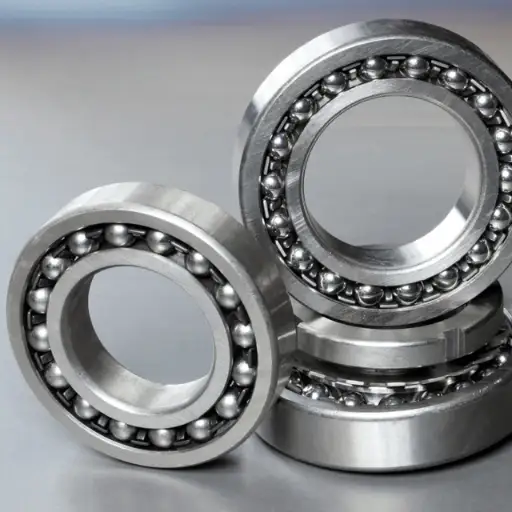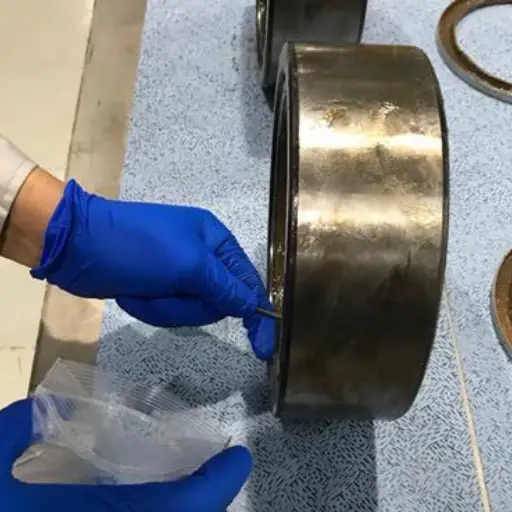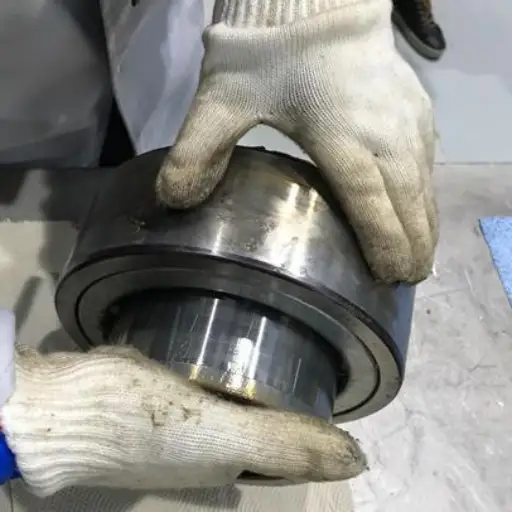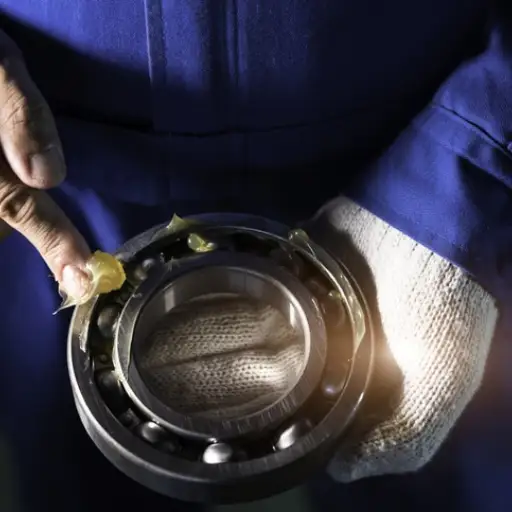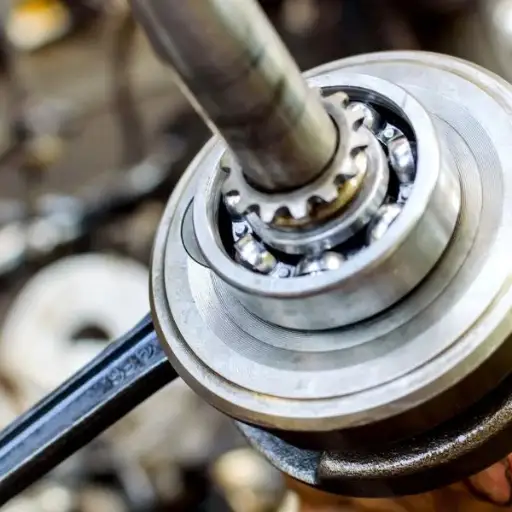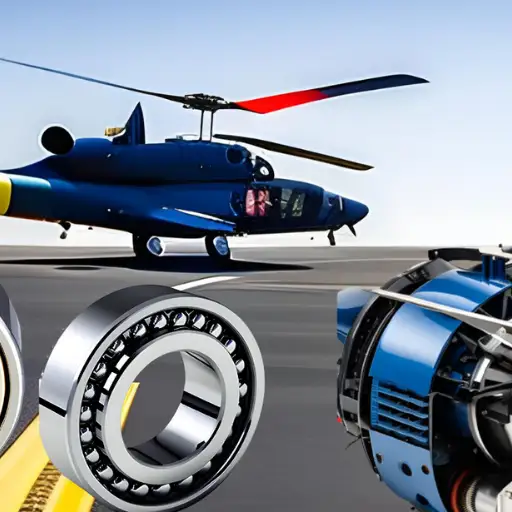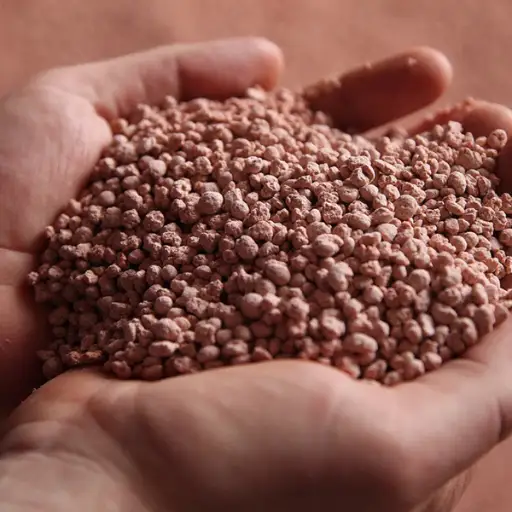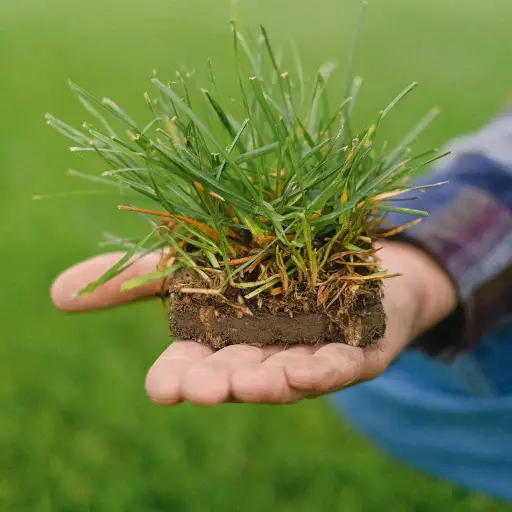Bearings are critical components in a wide array of machinery, designed to reduce friction and wear while supporting rotational or linear movement. Their reliable operation is essential for the smooth functioning of equipment ranging from industrial machines to household appliances. However, like any mechanical component, bearings are subject to wear and tear over time, which can lead to failure if not adequately monitored and maintained. This blog aims to provide a comprehensive overview of the early indicators of bearing failure, helping readers identify potential issues before they lead to costly repairs or downtime. By understanding these signs, maintenance personnel can implement timely interventions to maintain operational efficiency and prolong the lifespan of their equipment.
What Are the First Signs of Bearing Failure?
Typical Symptoms of Bearing Failure
Bearings usually show some signs of wear when they are likely to fail. The most common of complaints is strange sounds such as a grinding, squeaking, or metal scraping against metal which imply that there is too much friction or gunk in the bearing. Moreover, an increase in vibration of the machine can denote poor alignment, as well as internal defects in the bearing. The third sign is a temperature rise during operational terms which is caused by excessive pressure heat or the absence of oil. Suppose all these indicators are waited for and not missed, together with proper maintenance. In that case, it will be possible to take some corrective action minimizing more serious breakdowns in the machines caused by bearing failure.
How to Identify Bearing Damage in its Early Stage
Identifying damage to bearings as early as possible will aid considerably in averting mechanical failure and minimization of downtime. One of the useful means for assessing the extent of bearing damage is through conducting regular monitoring of the bearings. Monitor the bearings for the presence of rust, wearing, or any other physical distortion. Alternatively, integrating condition monitoring machines such as vibration analysis equipment also offers a non-destructive method to accomplish this task. These tools are effective in determining the vibration of the bearings to the casual relationship associated with its misalignment, unbalance or wear. Another important type of monitoring is temperature monitoring; what that entails is that if the temperature is higher than that expected, then there is likely excessive friction as a result of lubrication failure or general suffering of the bearing from structural failure. Lastly, consistent assessment of lubricant contaminants regularly indicates the presence of wear particles which are metallic and is an absolute indicator of wear platelet within bearings. Through these monitoring methods, bearing failure can be identified as well as acted upon in good time leading to reduced loss of bearing and more importantly the equipment is functioning capabilities.
Mr. Mustra also shared ways of diagnosing prematurely failed bearings
To know when any bearing can potentially fail, consider observing certain parameters that get out of their normal range. The most obvious of these is abnormal sound – for instance, a grating or a screech would indicate higher temperature or degenerated surface. Bearings themselves can be used as physiological indicators of damage, for example, the bearing’s shell may be missing some of its parts or the bearing has become deformed. One more key indicator is strong vibration – it usually signals non-conformity or abnormal centrifugal force. Monitor variations in temperature as well – heating up may occur due to slippage or oil starvation. Daily control of these parameters is basic for avoiding secondary damage to the equipment and for ensuring that the bearings do not seize in operation.
How Does Vibration Indicate Bearing Failure?
Finding Vibration Patterns in Wheel Bearings
Wheel bearing vibration patterns are important signatures indicating possible failures, as they tend to expose other factors such as misalignments, imbalance or even surface defects. In cases where bearings are defective, there is a tendency to have certain vibration signatures for example high amplitude and frequency. What needs to be constantly monitored is the increase in vibration level which is characteristic of certain shaft speeds, which points to a high probability of resonance or lack of tension. Such inconsistencies may be an indication of impending wear out of one or more components, thus allowing for maintenance to be performed before a breakdown occurs. Technicians can use these vibration patterns to undertake a failure analysis of the bearings and implement effective solutions to restore the system.
The Condition of Bearings under the Influence of Over Vibration
Over the years, it has become apparent that increased vibration can adversely affect the condition of wheel bearings. The presence of these strong strains on a bearing over a long duration of time will gradually lead to wear, eventually resulting in pitting or flaking of the bearing surface. This degeneration seems to be focused on the bearing but may also involve the components around it which can be very costly once repair or replacement is done. Also, excessive vibration can break the lubrication film fluid which is important to lubricate the rotating surfaces and exacerbates the friction and the temperature. This situation increases the possibility of bearing seizure and failure in operations. Nevertheless, early detection and assessment of excessive vibration can be useful in preventing the system from over strain hence extending its lifetime and reliability over greater periods. It is the same as with rotating parts – regular checks and servicing are key to avoiding the negative influence of over vibration on bearing conditions.
Methods to Measure Vibration in Machinery
One good method when measuring vibrations in machinery is using accelerometers which allow to measure the acceleration of the movement of the machine. Such sensors have a unique self-sensitivity; thus, they can be mounted on the machines to instant feedback of the vibration levels. A very popular method also employed is laser vibrometry which measures the vibration using laser beams in getting close to the equipment. This method provides a means of acquiring vibration measurement values with minimum disturbances to the equipment. Furthermore, regular onsite vibration checks are done with a portable vibration analyzer to avoid vibration moderately and check whether tany issues requirefollow-up investigations. Each of these methods contributes useful data for plans targeted at enhancing the life and functioning of machines.
What Role Does Lubrication Play in Bearing Health?
Significance of Proper Lubrication for Bearings
Lubrication is highly important for bearing life as well as for the effective operation of devices. It helps to reduce contact pressure and friction between the surfaces of mating parts within bearings, thereby controlling temperatures and safeguarding structural integrity. Good lubrication practices provide a protective film that oils the rolling elements and the interior of the races, thus minimizing wear and tear of the bearing parts. Lubrication also helps to remove heat that would otherwise accumulate in the bearing components during work and lead to thermal breakdown. It also consists of the blocking of moisture and other contaminants by creating a layer in between. Therefore, having the correct amount of lubricant is essential in avoiding costly machinery repairs or maintenance and unnecessary downtimes of the machines.
Signs of Insufficient Lubrication in Ball Bearings
Severe and prolonged inadequate lubrication in ball bearings can give rise to different problems which are likely to impair machine performance. Increased friction which usually is expressed as heat and noise during operation is common. Too much heat may lead to the bearing unit being overheated resulting in the bearing being subjected to more rapid or even ultimate failure. Increased vibration levels may also be observed when the lub oil is insufficient and causes the components of the bearing to be torqued loosely creating irregular motion due to the lack of lubrication. Certain constructions have also shown that wear particles or soot may adhere to the inner and outer ring preventing the bearing from functioning properly. These indicators are vital since their evaluation ensures that the right action is taken at the right time to prevent excessive equipment abuse.
How Contamination Affects the Performance of a Lubricant
Contamination affects lubricant performance remarkably by changing its viscosity and weakening its ability to perform the protection of the important components of machinery. Liquid particles, mists, and insolubles in the suspension phase of the lubricant may decrease the lubricant’s molecular coverage due to dilution and reaction of the contained chemicals. This contributes to the frictional forces and wear taking place at elevated temperature levels, thereby increasing the mechanical stress on the machine components and leading to their premature breakdown. Further, pollutants may facilitate oxidizing processes within the lubricant oil which speeds the whole degradation process rendering the lubricant useless. Thus, the lubricants should be kept free of any and all contaminants to improve the performance and durability of the machinery in need of lubrication.
What Should You Listen For? Unusual Noises from Bearings
Unusual Sounds that May Indicate Bearing Damage
When bearings sustain a form of damage, they make certain noise that can be viewed as a maintenance alert. Some of the more frequently occurring unusual noise types include:
- Sounds of grinding and grating: These noises are caused by abrasive materials that are free or loose within the bearing and increase the operational wear of the surfaces.
- Rumbling or growling sounds: These noises may result from misalignment of parts or from defect within the raceway. They also tend to be more load-dependent and are more distinct as the performance escapements deteriorate.
- Squealing and whining sounds: This kind of noise usually comes from the insufficient grease. Metal-to-metal movement caused by heavy pressurized areas can produce such kind of sound.
By recognizing and correcting these noise indicators early, damage can be averted and bearing life improved.
Origins of Squeals and Grinds
Squeals and grinding sounds in the machines aften aesult mfrom echanical lubrication due to fexcessive friction,which consequently leads to metal interface and noise. This plumbing problem can be reduced by making certain that lubricant is checked on a regular basis for both its amount and condition. Another contributing factor may be related to different elements being misaligned, thus placing excessive load on bearings, leading to non-uniformity across the entire roller surface and the chance of rasping or gnashing sounds. This leads to the recommendation that proper procedures and tools are to be employed during fitting in order to avoid these sounds. Also the increased and relative movements within the bearing often occurs when dirt, dust, moisture penetrates the bearing which causes sounds of rattling or grinding. In conjunction with trouble shooting these problems such as installation practices, perhaps more importantly, bearing contains a high dense seal that is extremely useful in keeping all hazards out, is to have proper maintenance measures applied. It is without doubt that through efficient monitoring and maintenance strategies, any such root causes can be resolved immediately thus preventing progressing amounts of damage.
The Relationship Between Noise and Bearing Failure
Bearing failure can also occur in the absence of an obvious defect. However, certain signs that oil might arise as noise in the bearings can be noticed. Since bearings are mechanical components, oil might not be considered a major concern but does arise due to various underlying factors. TSome common bearings noises canbe noticed for identification of malfunctioning bearings, such as whining, grinding, grating and squeaking. These often indicate insufficient lubrication causing high-pitched sound due to the contact of metal surfaces, incorrect mounting, and even contamination within the bearing. Metal-on-metal surface contact without proper lubrication is characterized by high-pitched sounds in a bearing, eventually resulting in wear. Bearings experience uneven loading due to misalignment leading to excessive vibration and potential grinding noises as bearings are forced to rotate axially. Dirt and moisture are also considered to be contaminants that cause undue friction and wear in the bearings while producing noise. Noise generated by these differehen expects from bearings can also be rectified by preventive maintenance which includes prompt application of lubricants to avoid failure of the bearing and it can be removed by Protecting the washing machine from overheating to boost its reliability.
How Does Operating Temperature Affect Bearings?
Identifying the overheating of a bearing as a possible bearing failure
From my practice, identifying the overheating of a bearing as a possible bearing failure is achieved by observation of variations in temperature during the functioning of the machine. BAsa rule, oBearings operate under certain temperature levels and noticeable change in the level can be a threat. As a consequence, overheating may result from lack of lubrication, overloading or poor installation where certain components are forced to advance higher than their normal level. This friction contributes additional heat which may wring out more of bearing wear phenomena thereby reducing bearing life. These factors too can be avoided by ensuring adequate lubrication, adequate alignment of respective components and appropriate bearing loads. All these measures can help prevent overheating and subsequent bearing failure. Controlling the temperature and performing routine maintenance is the best way to identify and eliminate these and other hazards in the early stages.
Effect of the Operating Temperature on the Bearing Life
It is evident from my findings that operating temperature is an important factor when discussing lifetimes of bearings. Within the recommended working temperature of the bearing, they are able to work well and for a long time. Prolonged high temperature will most normally cause a significant decrease in the lifespan of a bearing. More heat means more wear, less effectiveness of lubricants or a possibility that the materials will get damaged. It is very correct to say that lubrication is everything, without proper lubrication, provided especially at a high temperature, the friction will be increased leading to the complete crash of the bearing. For the bearings to last long, the operating temperatures should be kept below the maximum at all times during a properly executed load and regular checks. Also, heat flaking and life shortening due to high temperatures can be prevented by incorporating the proper bearing materials and lubrication for the known temperature.
Bearing Temperature Control Strategies
In order to achieve the intended goals of efficient operating of the bearings, I first examine the suitability of the chosen lubricant for the application. This means using the correct composition of the lubricant which can work under different conditions of temperature. I also pay attention to the frequencies of maintenance schedules, which also include the inspection and replacement of lubricants and grease to reduce the unwanted accumulation of materials which may increase the resistance. Further, I measure temperature of bearings with the help of sensors in order to detect possible problems in their performance starting from the earliest stages of the problem. In addition, I modify the configuration of the machines and instruments so that their bearings do not encounter excessive or abnormal loads that cause increased temperature. Implementing the above strategies will enable me in controlling the temperature of the bearing and thus increasing the efficiency of its operations.
Reference sources
- Bearing Failure Symptoms – Tameson: This source discusses excessive vibration as an initial sign of bearing failure, followed by increased heat levels.
- Warning Signs of a Bearing Failure – Machinery Lubrication: This article highlights defects in the races and significant temperature increases as warning signs of bearing failure.
- Tech Tip: 5 Common Signs of Bearing Failure – Tstar: This blog post outlines early indications such as machinery running unevenly, loudly, or with reduced accuracy.
These sources should help validate the feasibility of your topic for readers.
Frequently Asked Questions (FAQs)
Q: How can I tell if I need to replace a wheel bearing?
A: If you’re looking for signs to look for, listen for a significant temperature increase, excessive noise, or any vibrations while driving, which may indicate that it’s time to replace the bearing.
Q: What are the four stages of bearing failure?
A: The four stages of bearing failure include initial wear, progressive wear, significant temperature increase, and complete failure of the bearing, leading to the need to replace it.
Q: How does bearing contamination affect performance?
A: Bearing contamination can lead to accelerated wear and tear, causing the rolling elements to bounce and ultimately resulting in failure in your application.
Q: What is the cost to replace a wheel bearing?
A: The cost to replace a wheel bearing can vary, but it typically ranges from $100 to $500 per wheel, depending on the vehicle and the extent of the damage.
Q: What role does relubrication play in preventing failure?
A: Relubrication is essential for preventing failure, as it helps maintain proper lubrication levels, reducing the risk of overheating and damage to the roller bearings.
Q: Can infrared technology help detect early signs of bearing issues?
A: Yes, infrared technology can be used to detect early signs of bearing problems by identifying significant temperature increases that may indicate lubrication issues or impending failure.



